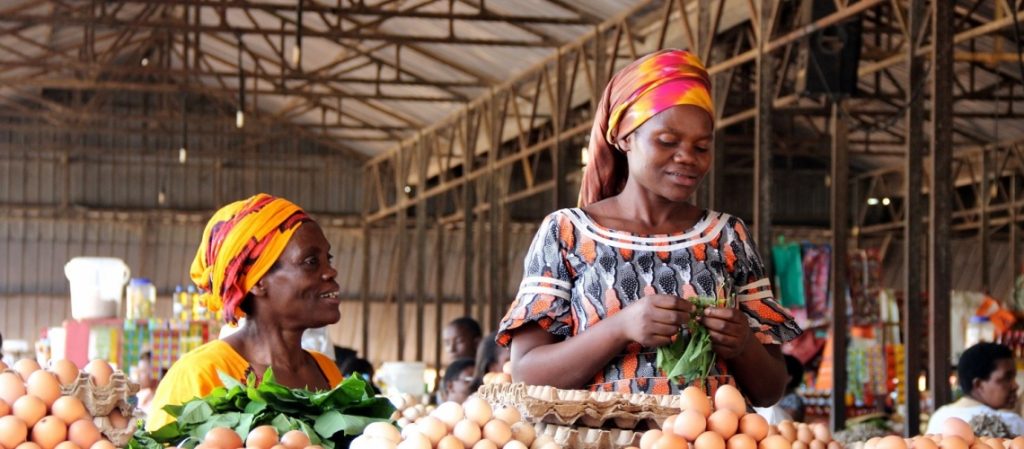
Global News
Global recovery is bypassing the poorest countries
World Bank14.07.2021Read original
Global growth is surging again, only a year after COVID-19 triggered the deepest recession since World War II. This year is likely to mark the strongest post-recession rebound in 80 years: global GDP is expected to expand 5.6 percent. Growth in advanced economies is expected to reach 5.4 percent—the highest rate in nearly 50 years—powered by rapid vaccination and unprecedented fiscal- and monetary-policy support since the beginning of the pandemic. Almost all advanced economies will go back to their pre-pandemic per-capita income levels in 2022. In some parts of the world, clearly, the pandemic’s damage is being repaired quickly.
Not so in the 74 countries eligible to borrow from the World Bank’s International Development Association (IDA). These are the world’s poorest: they account for roughly half of all people living on less than $1.90 a day. For them, the global “recovery” is simply nowhere to be seen. In 2021, their growth will be the slowest in more than two decades (except for 2020), reversing years of progress in poverty reduction. For them, the harm will not be repaired quickly. By 2030, one out of every four people here will still be living below the international poverty line.
COVID-19, in short, is doing the greatest harm to precisely the people—in precisely the places—that can least afford it. Even as the wealthiest nations begin to enjoy a return to prosperity and a semblance of normality, the pandemic continues to ravage the poorest countries. Maternal and child mortality is on the upswing in IDA countries because of reduced access to health services and food. Conflict and instability are also compounding the challenges for some countries.
History shows that misery on this scale inevitably transcends national borders. Tomorrow, heads of state from Africa—which constitutes more than half of all IDA countries—will gather in Abidjan, Côte d’Ivoire, to support a strong and early replenishment of funding for IDA. They will identify key priorities for financing a resilient recovery from the COVID-19 crisis. It’s in the interest of all countries to act swiftly to mobilize the resources needed to support this effort.
“Even as the wealthiest nations begin to enjoy a return to prosperity and a semblance of normality, the pandemic continues to ravage the poorest countries.”
These countries will need significant help to dig out of the COVID-19 recession. In 2020, the pandemic all but halted economic growth in IDA countries and caused per capita income to shrink by 2.3 percent. Our analysis indicates their growth will lag that of advanced economies by about 2 percentage points a year on average from 2021 through 2023, widening an already large gap between the richest and poorest countries.
A significant gap has also opened up in the health response to COVID-19: because of supply shortages, procurement struggles, and limited financing, the pace of vaccinations has been alarmingly slow. As of July, only three doses of COVID-19 vaccine per every 100 people had been distributed. That amounts to less than one-tenth the rate in advanced economies.
To return to the path to convergence with wealthier economies, IDA countries will need up to $376 billion in additional financing through 2025—above and beyond the $429 billion in regular external financing needs. Many of these countries are already heavily indebted, so the option to borrow is limited. Given the fiscal constraints of most countries in the pandemic’s wake, overseas development assistance is likely to remain flat or even decline. Under the circumstances, IDA countries increasingly will need support in the form of grants or zero-interest loans.
IDA has proved to be a uniquely effective platform in that respect. For more than 60 years, it has mobilized resources from donors as well as capital markets to deliver tightly focused support in the form of concessional financing to the poorest countries. Exactly a year ago, backed by $23.5 billion in donor contributions, IDA began a three-year cycle aimed at delivering $82 billion in financing to the poorest countries. Today, more than half that amount has already been committed, necessitating an early replenishment to support these countries from July 2022 through 2025.
This will be a critical period—for extinguishing COVID-19 for good and also for putting the poorest economies on the right track to overcome deep challenges of development confronting them in the long term. A first step will be to speed up the delivery of vaccines: nations with surplus doses should release them to the poorest countries, and vaccine manufacturers should prioritize available doses for countries that need them most. The next step is to put in place an ambitious package of policy reforms—to facilitate the transition of labor and capital to high-growth sectors, lower trade costs, and encourage environmentally sustainable investments—that can deliver a green, resilient, and inclusive recovery.
IDA countries are eager to do both. But they need—and deserve—all the help they can get. As leaders of the Summit on the Financing of African Economies noted recently: “We…share the responsibility to act together and fight the great divergence that is happening between countries and within countries. This requires collective action to build a very substantial financial package, to provide a much-needed economic stimulus as well as the means to invest for a better future.”
